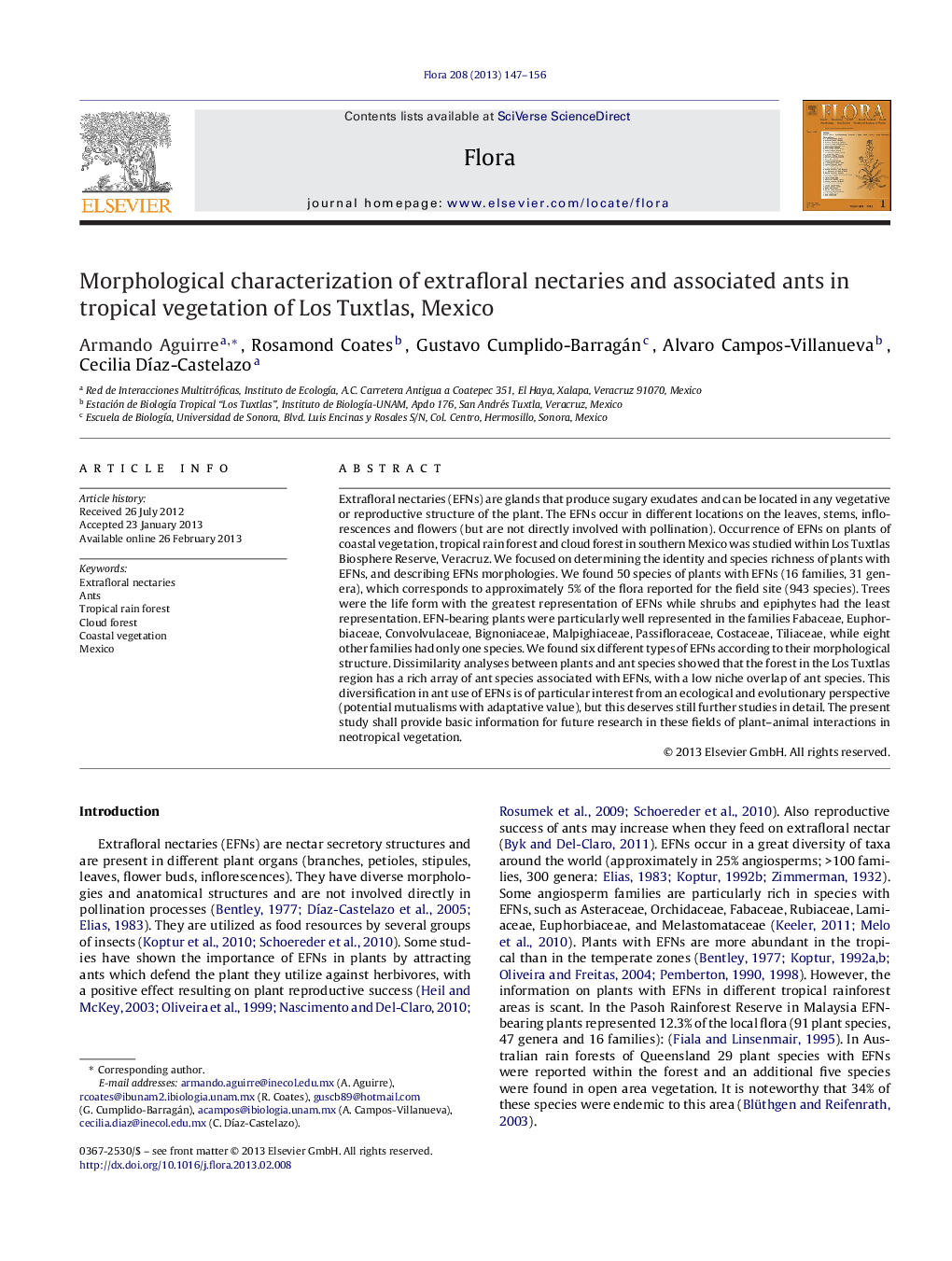| Article ID | Journal | Published Year | Pages | File Type |
|---|---|---|---|---|
| 2179545 | Flora - Morphology, Distribution, Functional Ecology of Plants | 2013 | 10 Pages |
Extrafloral nectaries (EFNs) are glands that produce sugary exudates and can be located in any vegetative or reproductive structure of the plant. The EFNs occur in different locations on the leaves, stems, inflorescences and flowers (but are not directly involved with pollination). Occurrence of EFNs on plants of coastal vegetation, tropical rain forest and cloud forest in southern Mexico was studied within Los Tuxtlas Biosphere Reserve, Veracruz. We focused on determining the identity and species richness of plants with EFNs, and describing EFNs morphologies. We found 50 species of plants with EFNs (16 families, 31 genera), which corresponds to approximately 5% of the flora reported for the field site (943 species). Trees were the life form with the greatest representation of EFNs while shrubs and epiphytes had the least representation. EFN-bearing plants were particularly well represented in the families Fabaceae, Euphorbiaceae, Convolvulaceae, Bignoniaceae, Malpighiaceae, Passifloraceae, Costaceae, Tiliaceae, while eight other families had only one species. We found six different types of EFNs according to their morphological structure. Dissimilarity analyses between plants and ant species showed that the forest in the Los Tuxtlas region has a rich array of ant species associated with EFNs, with a low niche overlap of ant species. This diversification in ant use of EFNs is of particular interest from an ecological and evolutionary perspective (potential mutualisms with adaptative value), but this deserves still further studies in detail. The present study shall provide basic information for future research in these fields of plant–animal interactions in neotropical vegetation.
